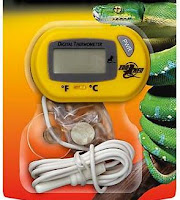The sun is out, albeit, brisk. Temps are not getting above mid-60s this weekend. However, the chicks are enjoying the fresh air, and the sun through the door. On occasion, one or two will pop out into the grass to look for bugs and worms, but mostly like being inside where there's heat radiating from overhead. While we have placed food and water in the pen, we will also keep it inside the hoop coop unless they start getting so fat, that they can't walk. We don't want them THAT fat!
The heavy water-proof canvas tarps along with the down-filled comforter laying in between, is doing the trick to keep the warmth inside at night. That's our solution for now, until we can come up with something better for next year.
Next weekend will be the extra lighting set up in the other coops, since we are barely getting 13 hours of sun per day. To keep the layers producing a little better, we need at least 13 hours of sun/light. We set up the lights inside the coops to come on at 4 am for the layers and that way, all fall, winter and spring, they are getting a minimum of 13 hours of light and sun to help with egg production. Additionally, we will take off the sun cloth from the pens, so that any sun that does peek out from the clouds, helps to promote a little extra warmth, and lots of vitamin D.
We always try to use clear plastic on the pens as rain guards covering over 75% of the pens, but at the same time, there's a gap for ventilation purposes on each side. We do cover one or both sides of the pens, when there's a strong wind or snow for a little extra protection.
I recognize that some people think we go a bit overboard with protecting our chickens, but the reality, as we have learned, is that the extra protection reduces the stress level for the chickens, and we don't need to feed them any medicated food in order for them to be good egg and meat producers. The layers produce good eggs almost all year long, they don't pick/peck on each other, they forage like "real chickens" are intended to do, and they are not bored because we move their paddocks regularly to fresh grass. We don't pamper them; we do treat them humanely without turning them into pets.
 |
| Close up of Hoop Pen |
|
 |
| Hoop Coop and Pen is Set up |
|
 |
| Cornish X Sunbathing |
|
 |
| The goofy Hoop Coop and Hoop Pen |
|
 |
| New Welsummer Doing the Sunshine Lean |
|












